How to paint patterns with brushes in Tegaki(hand drawn) Kyo-Yuzen
- e2014/04/16
- aProcess
After dyeing the background color, steaming and washing, we finally paint patterns called “Yuzen” in Japanese. As its name suggests, Yuzen is the most important process in Tegaki(hand drawn) Kyo-Yuzen. If each color we choose doesn’t match or painter doesn’t have good skills to paint, it’s gonna ruin everything.
Although we make pretty much one color when we dye the background color, we do more than 10 colors while we paint patterns.
It depends on how many patterns we have. The more we have them, the more we make colors.
Let’s say we have a design of cherry blossoms then we make at least 3 colors such as
- blossoms(pink)
- branches(brown)
- leaves(green)
Even though we say “green”, we need to make dark green, neutral green and light green to make a contrast.
What do you use to paint?
OK, we are going to explain what utensils we need in this process.
Dyes and pigments
First of all, we get dye powder in a store and then put it into water and boil it till it’s dissolved.
The store usually sell lots of colors such as yellow, orange, red, purple, blue, green, olive, brown, black and light ones or dark ones.
Although liquid dyes are sold lately, we use powder ones because liquid ones don’t keep their quality for a long time.
White dye doesn’t exist so we use white pigments called “Gofun” to paint patterns white.
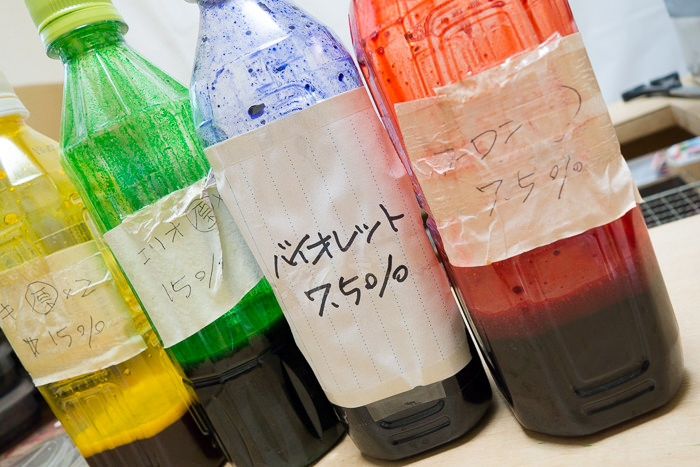
These base dyes(colors) are stored in plastic bottles.
We put labels so that we can easily find colors we want at first glance.
Each label says its color name and concentration.
Brushes
We use brushes to paint and they are roughly divided into three types.
- Round brush-to paint the ground in 1 color. This is an all-purpose brush to paint both large area and small area.
- Diagonal cutting brush-to make a gradient.
Put dyes on the taller side and put water on the lower side to get a gradient. - Flat cutting brush-The usage is pretty much the same as when we use a round brush. It’s much easier to paint evenly than a round one.
Brushes come in a wide variety of sizes between 3mm and 3.6cm. We often use between 9mm to 1.8cm brushes.
When we paint a large area, we use large size of brushes. Otherwise, it’s hard to paint evenly and we have to paint more. This is why we use the right size of them and need many kinds of them.
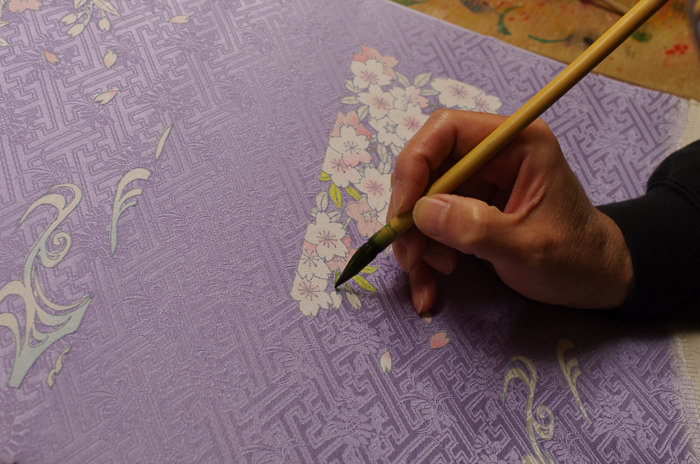
A round brush.
It’s easier to paint a narrow pattern like this with a round brush rather than a flat cutting brush.
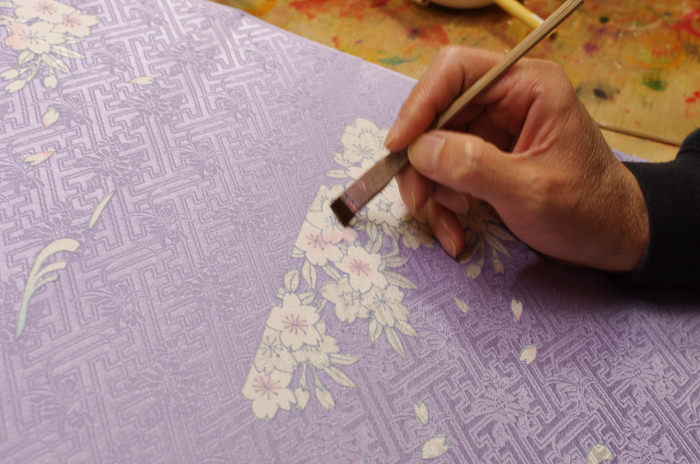
A diagonal cutting brush.
This is used to make a gradient.
It much harder to make it than it actually looks.
You always have to think how much water/dye you put on the brush. Otherwise, you shouldn’t be able to get a natural gradient.
How do you paint?
1.Jiire with volatile oil
This is a preparation before painting.
First, volatile oil is sprayed on each pattern on the back of silk and rub it with a big brush as it penetrates into the silk.
We paint patterns inside of rubber glue.
Although this rubber glue is stuck on the silk, it’s not into there.
Unless rubber glue is penetrated into the cloth, the dyes is going to leak out.
Doing Jiire with volatile oil prevents patterns from leaking out.
2.Color matching(color making)
Once color matching is done, a half of this process is already finished.
It takes that much to match colors we want.
Then you might think why it takes time so much?
We make dyes(colors) based on between 10 and 15 dyes and mix them some water or pigments to make colors we want.
Judge by sight
Even though we say “purple”, there are violet, magenta and more. And they might be dark or light purple. We check colors by looking and then change the density of dyes to drop by drop until the color turns to be the right one.
It’s not so hard to make similar ones. But after that, We need to know what color we need to add. That might be yellow or blue and something put a bit water.
A long experience is always needed to make the right ones we need.
Change in color after steaming and washing
We are going to steam and wash the silk again after painting.
As we explained here, steaming not only makes dyes stick in the silk but also make them become more vivid. And washing takes extra dyes away. That means the colors we paint on the silk, is going to change.
We always have to predict how they are going to change after painting.
It’s not that simple to make the right colors.
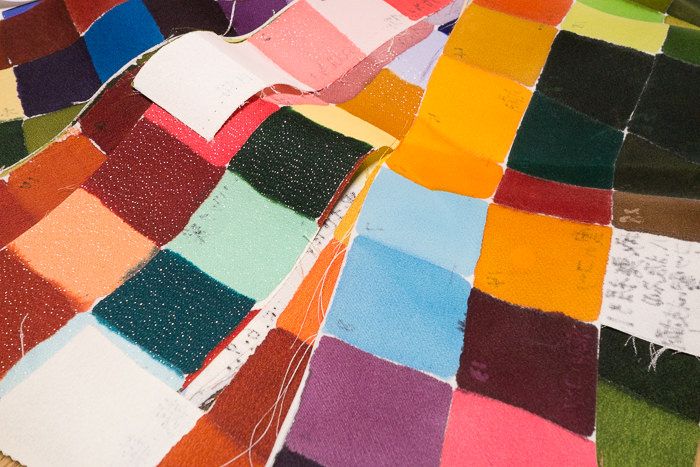
Color samples.
Whenever we make items, we make color samples as well.
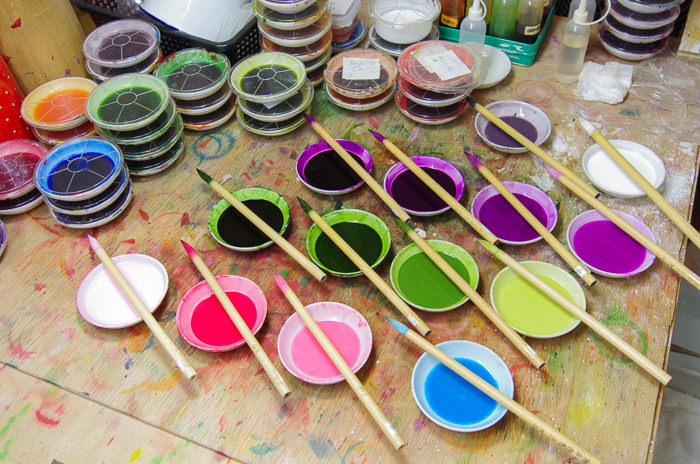
These are colors we use this time. The more colors we have, the more it takes time to make.
Stop spreading
Even though we put a bit dye on the silk, it might spread more than we expect. So we need to stop spreading with sizing agents called “Casein” or “Tomezole”.
But we always need to be careful to use them because the dyes don’t spread at all if we put those sizing agents too much.
3.Yuzen(painting)
After making colors is done, we finally start painting.
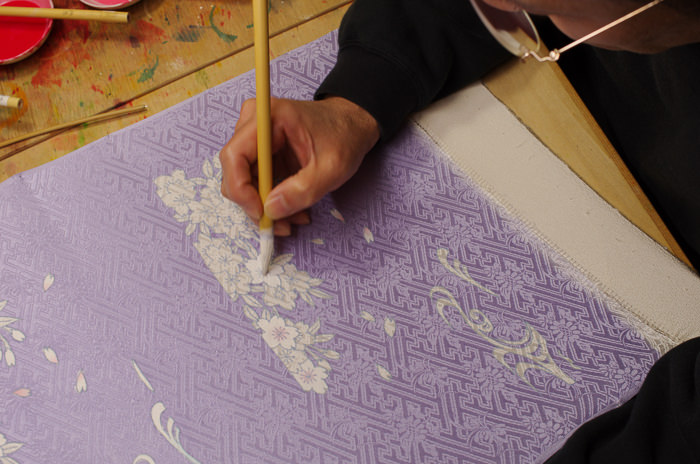
Painting inside of rubber glues with a white pigment as a base color.
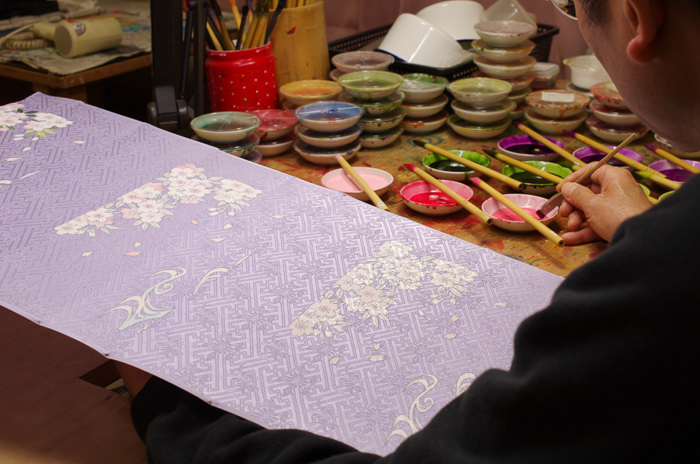
Put light pink on a brush.
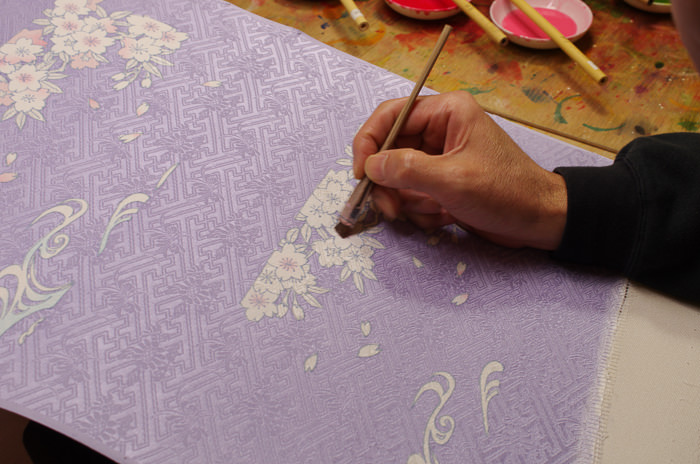
Make a gradient with a diagonal cutting brush.
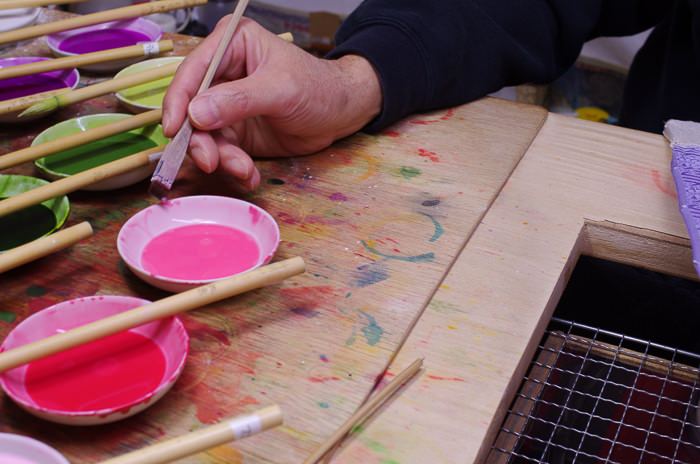
Put the dye a bit on the tallest side of the brush.
The lower the brush’s hair is, the lighter the gradient is.
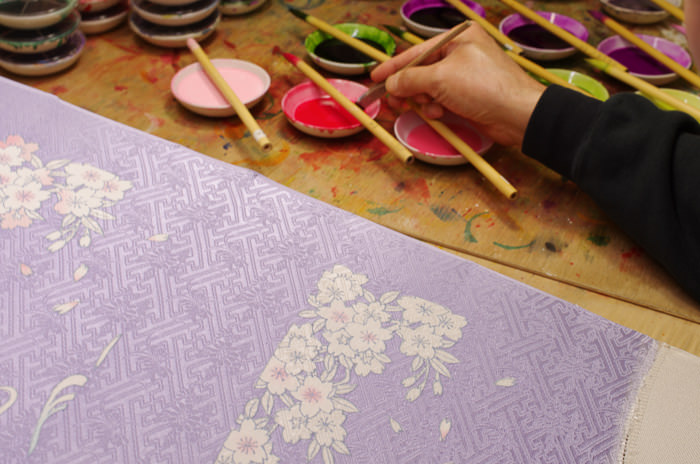
Next, we use a bit darker pink.
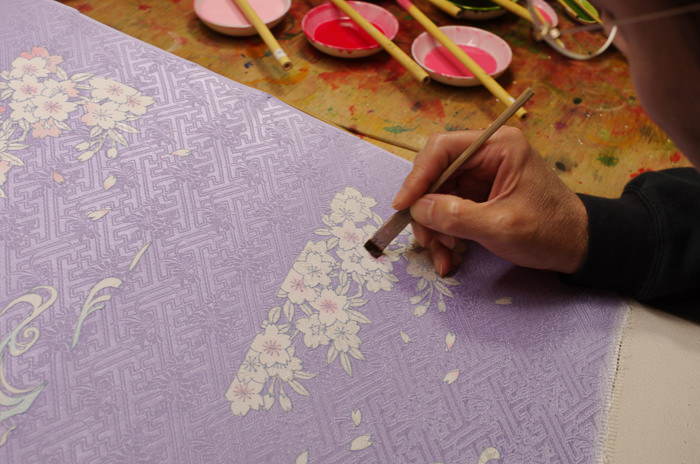
This darker pink makes a contrast between light one and dark one.
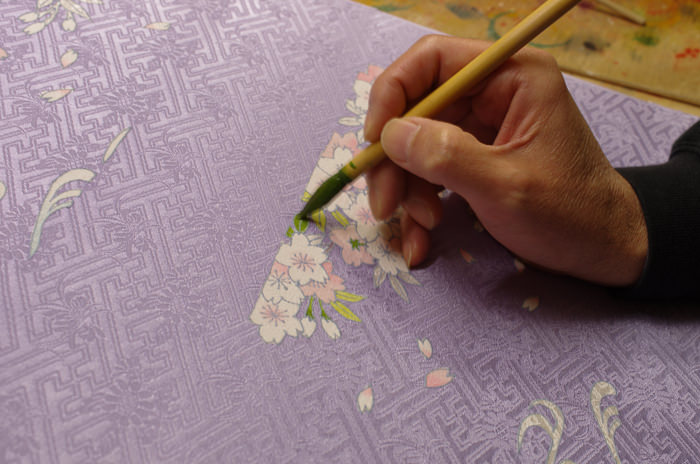
It’s harder to paint curving lines with a flat cutting brush. We use a round brush instead.
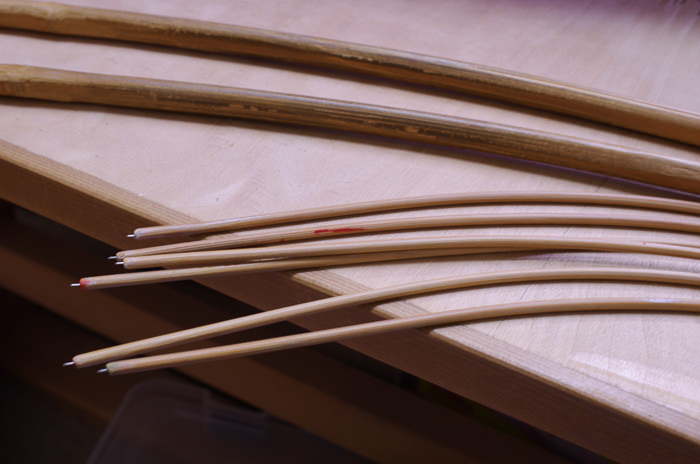
Shinshi(sticks) help us to keep a cloth flat during dyeing. This is exactly the same ones as we used during hikizome.
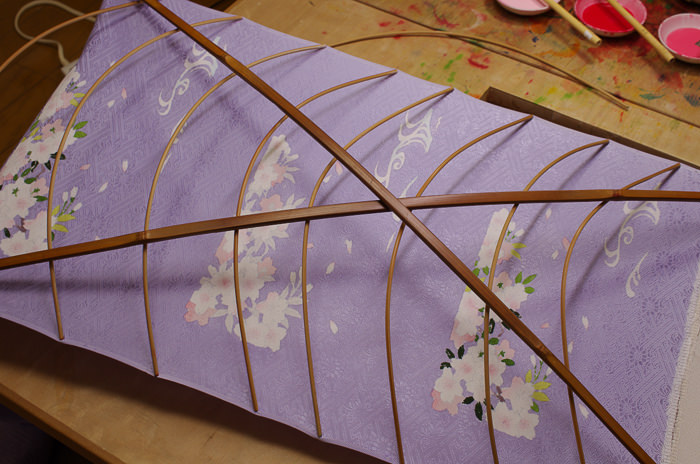
The other side.
When we paint, we hold these two thicker sticks.
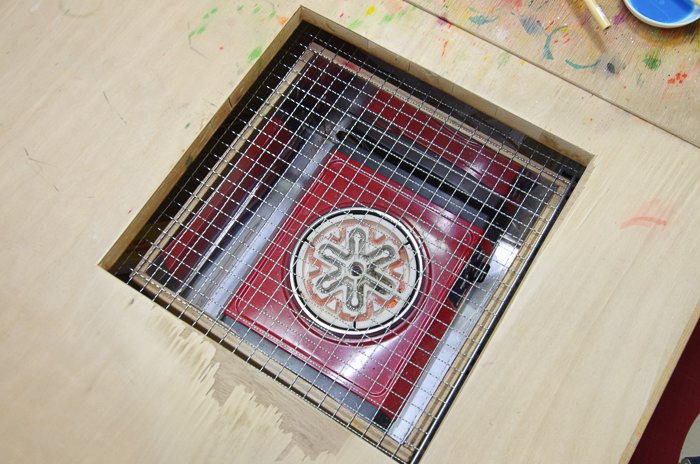
A heating device is underneath.
This device helps to make the dyes dry faster while we are painting.
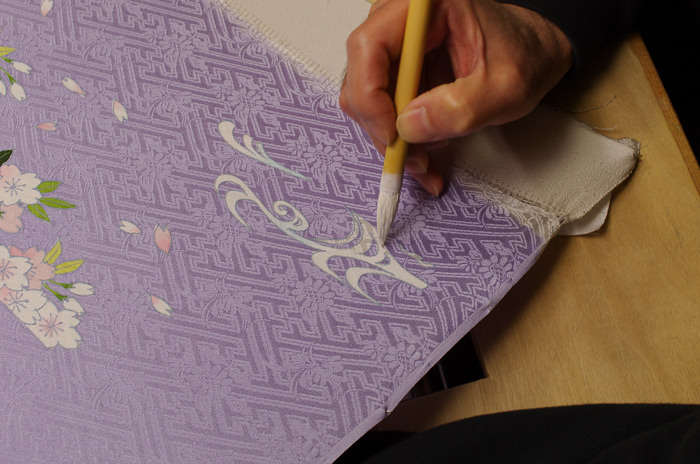
First of all, we paint a flowing stream white as the base color.
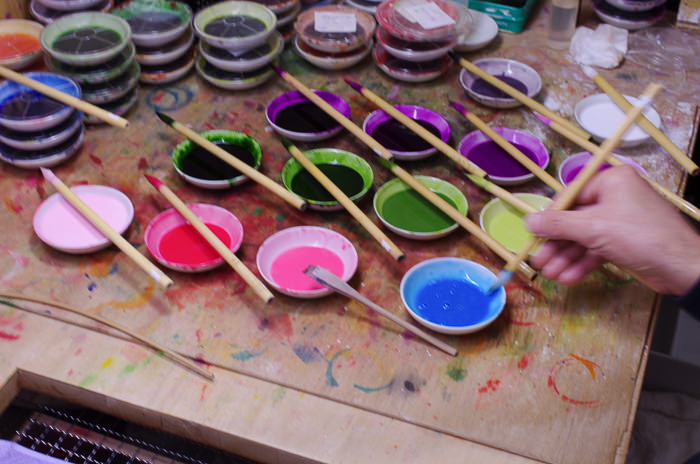
Then use a light blue dye
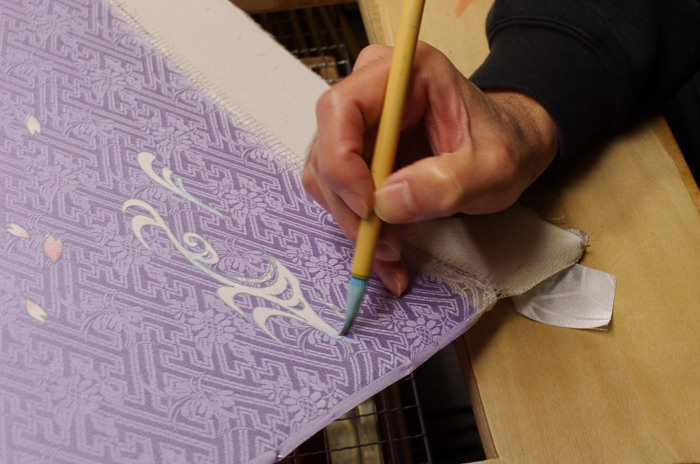
to make a gradient.
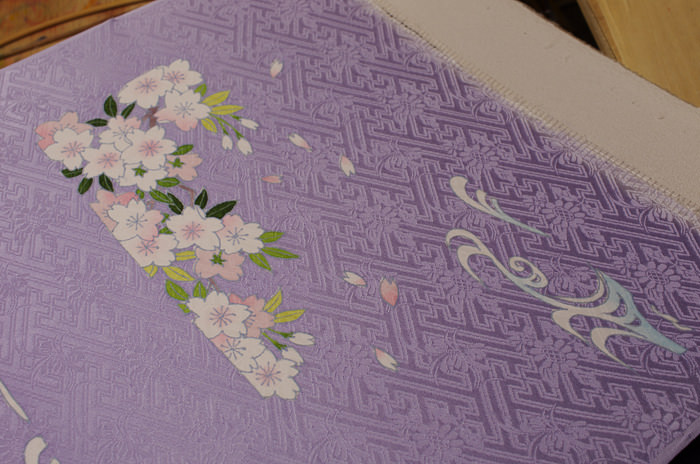
That’s it.
Shades of colors
Whenever we make colors, we make the base(prime) colors first. And then we put water or the white pigments into each one so we get lighter ones and darker ones. (like we got those pink and green ones this time)
This gives us harmonious color schemes and this is a traditional way to choose colors for Tegaki(hand drawn) Kyo-Yuzen.

